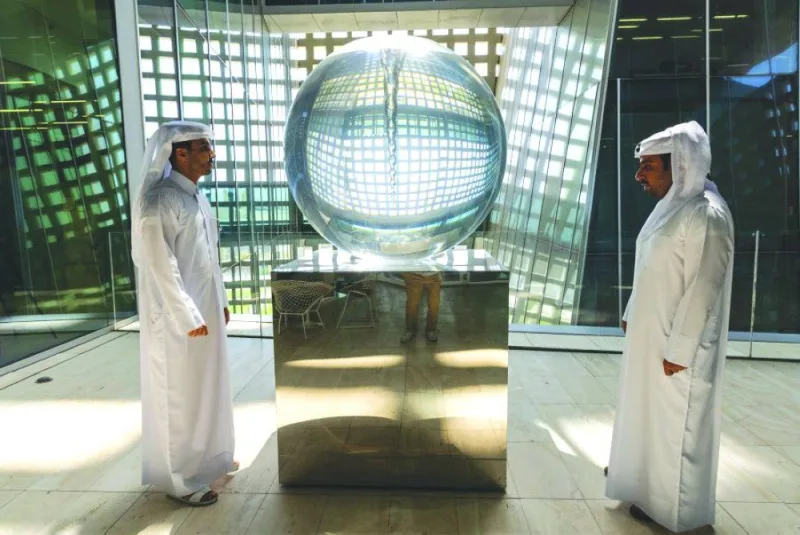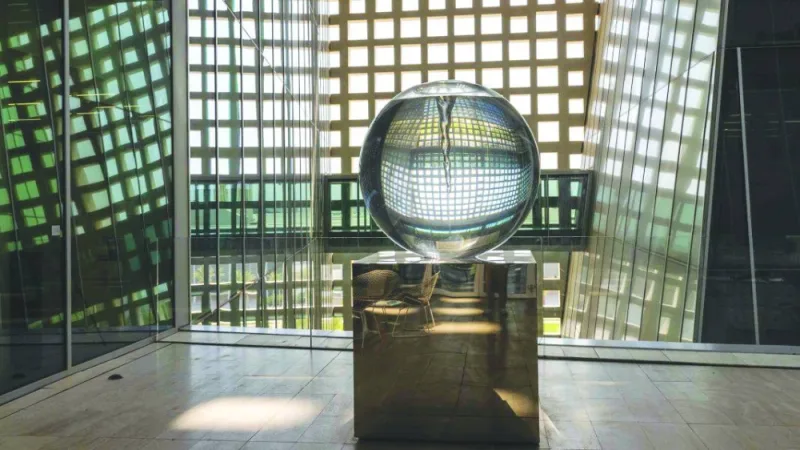Qatar Foundation (QF)’s diverse art collection continues to contribute significantly towards the local art scene in Qatar, with the 2015 building – the QF headquarters – home to five striking art pieces.
One of these is Vanishing Point.
When one first encounters Vanishing Point – housed on the fourth floor observation area of the 2015 building – one will feel as if looking straight into a vast lens that bends light and dramatically transforms the surrounding architecture.
Jowaher al-Marri, manager of communications outreach at the QF, experiences this on a daily basis, as her office is located near the installation.
The first thing that comes to her mind when looking at it is “energy and source”.
“It always reminds me of the inevitable circumstances, the situations that we encounter and have no hand in changing or avoiding, but eventually we find our way out of it,” she said.
For British artist Petroc Sesti, the act of creation needs to satisfy the maker’s mind and body.
In Vanishing Point, as Sesti explains, the body of the artwork is conveyed by “translucency, movement, chaos, and the order of water”.
The aim is for people to ask themselves: what is the motivation behind this artwork?
According to Sesti, the inspiration for *Vanishing Point stems from moving away from static, motionless sculpture, and toward a sense of movement that is evident in nature.
“Everything is in movement,” Sesti says, “from the atmosphere to the oceans and cosmology.”
His appreciation of astrophysics and the all-consuming nature of rotating black holes is what lies behind the work.
“I’ve always been in search for a metaphysical sense of the edge of existence, conveying nature beyond day-to-day human experiences,” he said.
"Black holes fascinate me: they are like punctures in space-time, like scars which cannot heal themselves, remnants in locations where vast primordial stars once collapsed,” Sesti explained. “Very much alive and at the core of spiral galaxies, they are at the top of the cosmic food chain.”
Vanishing Point pushes the boundaries of art and science, exploring the ever-changing relationship between artwork, the viewer, and the setting in which it is placed.
When speaking about the element of water that is contained within Vanishing Point, Sesti believes that it reflects how artists can play a key role in highlighting and communicating environmental issues to the public.
“I believe that artists need to not just work according to galleries’ demands, not just work for money, and not expect galleries and institutions to address environmental issues themselves,” he said. "That’s why I started a charity called Platform Earth, where artists, scientists, and change-makers come together to address climate change.”
While Sesti has artworks in different areas around the world, Vanishing Point has a special meaning for him.
"When I consider Qatar's history, with its trading routes navigated by the stars and its appreciation of vital water sources, I’m happy the artwork exists in Qatar,” he said. “As we celebrate the artwork’s 10 years of constant activity, it’s an opportunity to reflect on how Qatar has continued evolving to be a world leader at the forefront of art, science, and emerging culture.”

The Vanishing Point

The Vanishing Point
